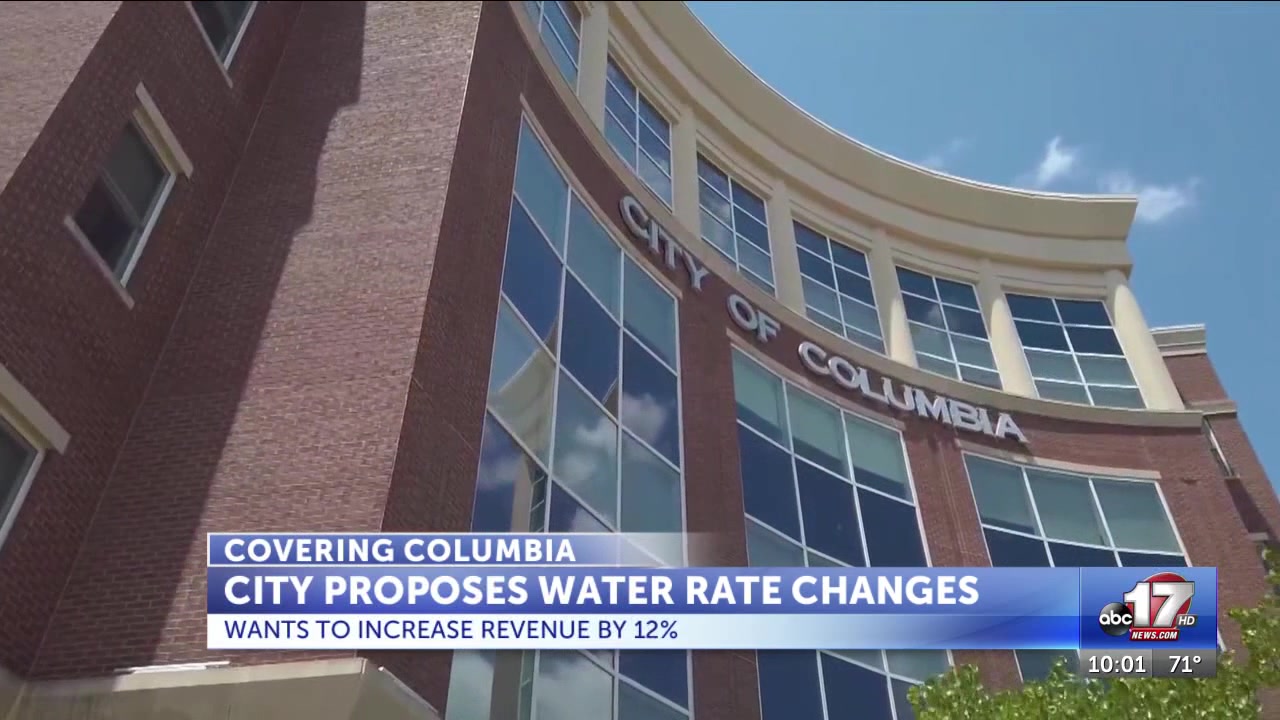Columbia City Council tables vote on proposed water rate hike

Erika McGuire
COLUMBIA, Mo. (KMIZ)
The Columbia City Council tabled a vote on proposed water rate increases for fiscal year 2026.
The council discussed the proposal during Monday nights meeting and heard public comments. According to the city, the proposed changes would increase water utility revenue by 12%. However, despite the increase City of Columbia expects water bills to decrease for 65% of residential customers.
The city conducted a cost-survey study to evaluate whether current water rates were keeping up with expenses. Columbia Utilities spokesman Jason West said the increase needed to keep up with rising costs.
“Lines, personnel and paying people to work for the water department,” West said. “All of that keeps increasing and so to help to stay ahead of that and be able to have competitive salaries; to be able to have modern technology and not offset needed infrastructure maintenance, then there needed to be a revenue increase to stay on top of those things,”
Under the proposal, the base fee charge would see a 25-cent increase, from $14.07 to $14.32. The total would include a customer’s monthly rates based on meter size plus a fire flow charge which covers the cost of providing water for fire protection.
The proposed change would combine the two under base charges. In the current rate structure the items are listed separately on a customer’s bill.
Residents whose monthly water usage stays at or below 100% of their winter average consumption will see a decrease in their usage rate under the proposal. WAC is the customer’s average water use during the winter months (January, February and March).
Tier 1 customers will see a drop from $3.22 to $2.30 per 100 cubic feet, which is approximately 748 gallons. Tier 2 would increase from $4.44 to $6.33, while Tier 3 would jump from $6.89 to $10.20.
Currently, the city uses an inclining block structure, which means a customer’s rate per consumption increases when a customer exceeds a certain threshold.
According to the city, the current structure for all non-summer usage from October-May is charged at the Tier 1 rate.
During the summer months, from June through September, the tiers are based on a customer’s WAC.
Summer Tier 1: Usage of 0-70% of customer’s WAC
Summer Tier 2: Usage of 71-170% of customer’s WAC
Summer Tier 3: Usage exceeding 170% of customer’s WAC
Under the city’s new proposal, the tiers would be applied year-round rather instead of only during the summer months. Additionally, tier 1 would be extended to 100% of the customer’s WAC. This means, the proposed percentage increase in tiered charges means customers who have a consistent water usage each month won’t see their bills change with the seasons.
Tier 1: Usage of 0-100% of customer’s WAC
Tier 2: Usage of 100-200% of customer’s WAC
Tier 3: Usage exceeding 200% of customer’s WAC
Julie Ryan with the CoMo Safe Water Coalition said the group has supported small, gradual rate increases to help maintain operations without hurting ratepayers. But the possible changes to water rates make her question how the city is managing its spending and says residents aren’t seeing the benefit.
“Saying they need this additional funding tells us they haven’t spent what they’ve already had effectively, or shown good stewardship of ratepayer money,” she said.
Ryan also questions the 2018 water bonds, saying some projects have started, but others haven’t making the rate increase harder to justify.
“It’s really hard for us to justify needing to raise rates consistently when the utility isn’t actually getting the things done they were suppose to,” Ryan said.
West said, the reason the city is behind on water bond projects is due to changes that have taken place since it was passed.
“A lot of change on the city council and city leadership so some of those projects that were put on the back burner, or put on pause after the 2018 bond election are now being able to be refocused and be put into play,” West said.
If approved, the new water rate structure would go into effect Oct. 1 2025. West said the city will conduct another cost-survey study in about another five years. The current water rates were put in place in 2018, according to West.
Columbia residents could also see changes to electric rates and Ameren plans to raise natural gas prices in September.